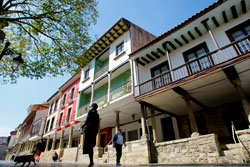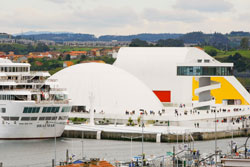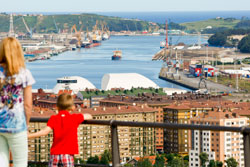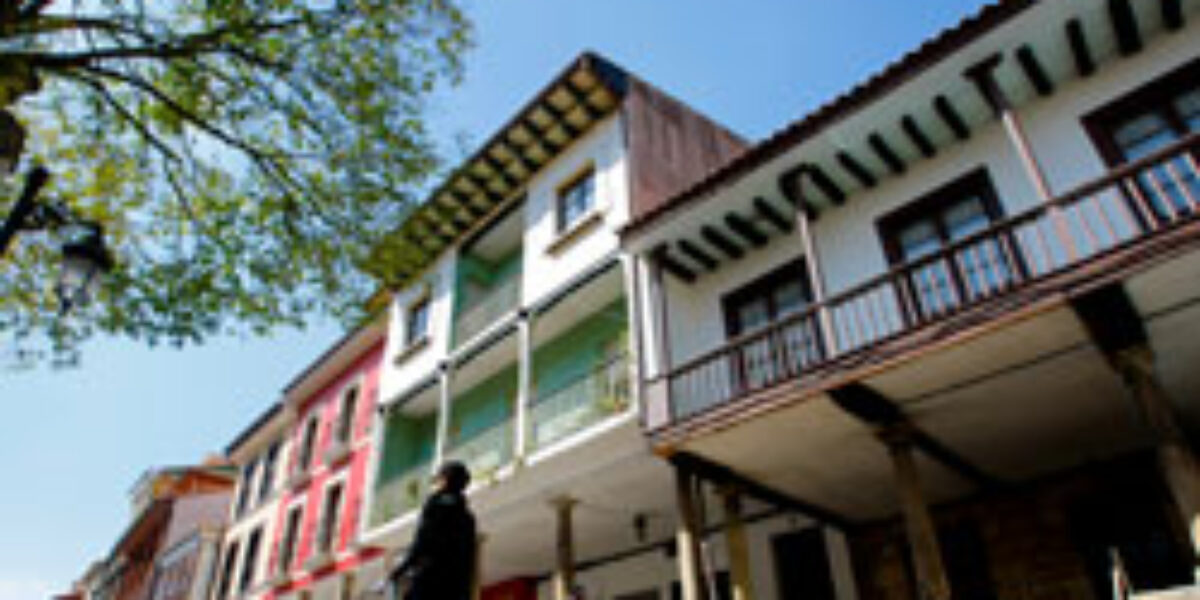Avilés in the Atlantic Arc
 Avilés is an industrial and port city with a rich historical and cultural heritage. It lies on the north coast of Spain near the Principality of Asturias airport. Home to some 85,000 people, it is an ideal place to live and in which to invest, given the enormous transformation it is currently undergoing.
Avilés is an industrial and port city with a rich historical and cultural heritage. It lies on the north coast of Spain near the Principality of Asturias airport. Home to some 85,000 people, it is an ideal place to live and in which to invest, given the enormous transformation it is currently undergoing.
Several large, multinational companies, such as ArcelorMittal, Alcoa, Saint-Gobain, DuPont and Xstrata Zinc, operate there, as do the technological giants, CSC and Software AG. Not to mention hundreds of small and medium-sized enterprises from all sectors.
Recent years have seen extensive restoration work on the city’s historical medieval centre: a true gem that is the pride and joy of Avilés’s denizens and a tourist attraction for thousands of visitors every year.
One of the most unique features, and which best defines the personality of Avilés is its Ría, an estuary of great beauty on the edges of which stands the architect Oscar Niemeyer’s biggest work in Europe: the Niemeyer Centre, which symbolises the transformation of the city and which has become a cultural tourism reference point.
With a view to furthering this process of transformation, the Government of the Principality of Asturias, Avilés City Council, Avilés Port Authority and state-owned companies are promoting a plan: THE ISLE OF INNOVATION. This initiative involves taking extensive, old industrial land and transforming it by means of strategic town planning into an economically vibrant space.
The project was drafted by the Fundación Metrópoli, an international institution based in Spain the purpose of which is to contribute to the innovation and development of cities and territories from an international perspective.
 The raw material for this project is a territory with enormous potential and one that is in a process of transformation: the Avilés estuary and its surroundings. The great possibilities offered by this location have been reinforced by the siting, in its very heart, of aforementioned Oscar Niemeyer Cultural Centre.
The raw material for this project is a territory with enormous potential and one that is in a process of transformation: the Avilés estuary and its surroundings. The great possibilities offered by this location have been reinforced by the siting, in its very heart, of aforementioned Oscar Niemeyer Cultural Centre.
It includes defining elements such as a conference centre, the new home of the School of Art, lofts, so-called “innovation cubes” or business innovation-cum-incubation centres for companies, park-gallery, intermodal hub and new access avenues to the city centre and to the newly and comprehensively enlarged and modernised Port area: goods traffic, cruiser dock and marina.
The ISLE OF INNOVATION, which covers some 572,000 m2, is divided into three spaces all of which are being regenerated and which form a whole with the estuary and its surroundings, the port and the main access road to the city.
Its development involves some big challenges, such as the need to overcome the railway barrier, the generation of urban spaces and innovative architectural elements, in addition to improvements to public transport.
One of the keys to the regeneration of Avilés has been the involvement of the city’s inhabitants in taking public decisions by going down the association route and by citizen involvement in participatory budgets.
 The Avilés of today is one of great economic energy and social cohesion, offering all of its inhabitants opportunities to achieve their life’s goals under optimum conditions. The city has made a serious commitment to education and can boast of quality public services in terms of health and social care. It has one of the highest public safety levels in Europe, not to mention the numerous green spaces dotted around the city.
The Avilés of today is one of great economic energy and social cohesion, offering all of its inhabitants opportunities to achieve their life’s goals under optimum conditions. The city has made a serious commitment to education and can boast of quality public services in terms of health and social care. It has one of the highest public safety levels in Europe, not to mention the numerous green spaces dotted around the city.
We are living through difficult financial and economic times, but Avilés has shown itself capable of making the most of recent years to design a renewed and regenerated city project with undeniable attractions – present and future – for investing in and as a place to live. Without a doubt, a reference point in the Atlantic Arc.


